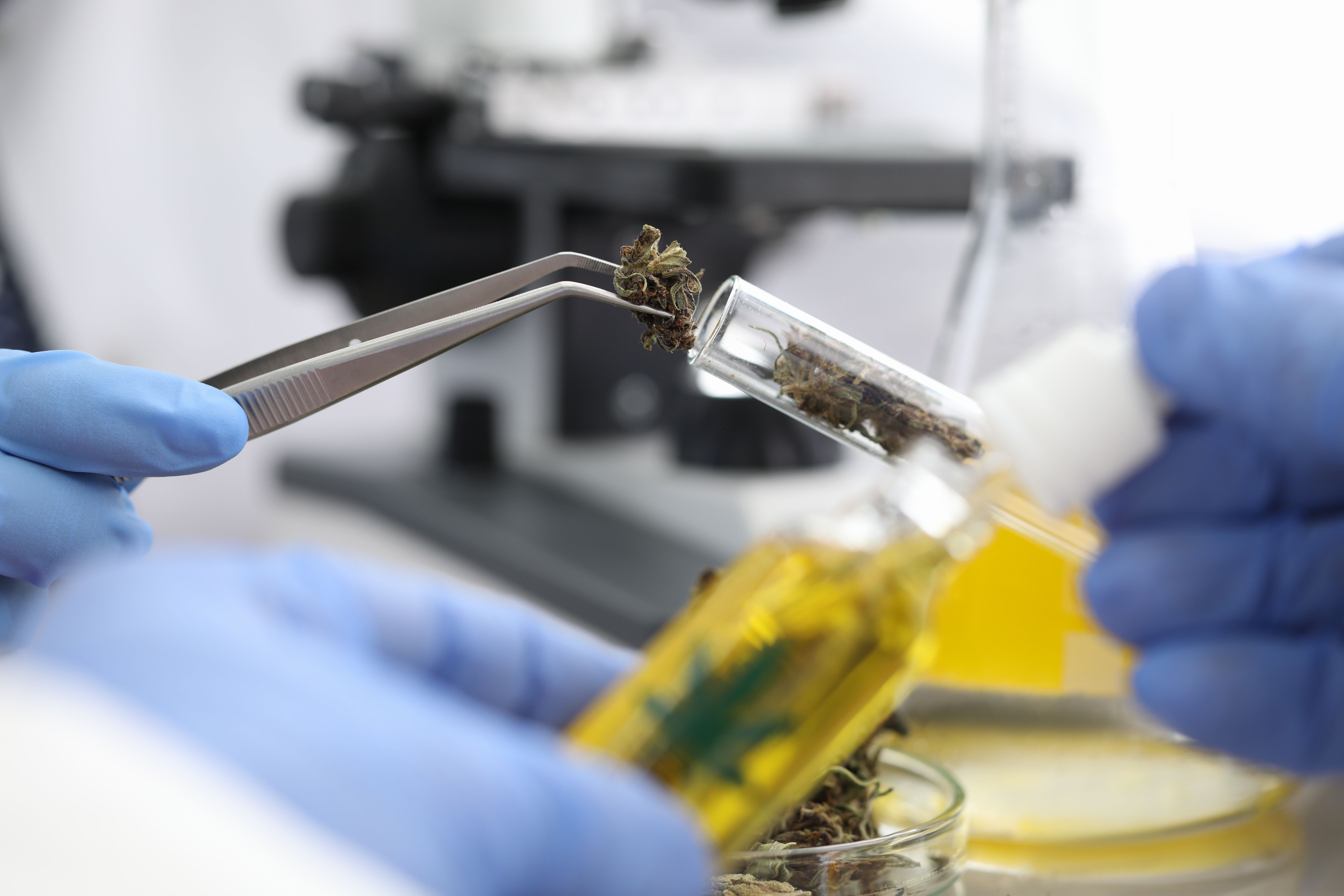Analytica Examines What’s New in Phytocannabinoid Quantification
Chromatographic and spectroscopic techniques alike were reviewed for their current effectiveness and future potential in this lecture session at Analytica 2024.
With medicinal cannabis gaining wider acceptance, coupled with an increase in the legality of recreational cannabis, quantifying the psychoactive and other components of cannabinoids was the issue at hand for four presenters in a session called “News on Phytocannabinoids” at the Analytica 2024 conference in Munich, Germany, on April 10. The two-hour session was moderated by Dirk K. Wissenbach, pharmacist, and lecturer in the toxicology department of the Natural Sciences team at the Institute of Forensic Medicine at University Hospital Jena in Germany.
Macro shot of cannabinoid oil | Image Credit: © H_Ko - stock.adobe.com

First in the session was “Phytocannabinoids: Chemistry, Analysis, and Pharmacology,” a lecture by Rudolf Brenneisen, co-founder of the Swiss Society of Cannabis in Medicine (SSCM), secretary general of the Swiss Academy of Pharmaceutical Sciences, and founder and owner of MedCanSult. This leadoff talk established the list of more than 500 identified components within Cannabis sativa L., and reviewed the chromatographic and spectroscopic techniques used to analyze the species—primarily gas chromatography (GC) paired with flame ionization detection (FID) or a mass selective detector (MSD) and high performance liquid chromatography (HPLC) coupled to a diode-array detector (DAD), but also high performance thin-layer chromatography (HPTLC), ultrahigh-pressure liquid chromatography (UHPLC), standard GC, GC coupled with mass spectrometry (MS), near-infrared (NIR) or nuclear magnetic resonance (NMR) spectroscopy, and ion-mobility mass spectrometry (IM-MS) (1).
Following Brenneisen, Rainer Fritsch, general customs directorate of the Centre of Education and Science/Science Department Munich, Markt Schwaben, Germany, spoke on “Analysis and Assessment of THC, CBD, and HHC Phytocannabinoid Containing Products.” Fritsch highlighted the work of the five German customs laboratories tasked with testing the legal components of seized phytocannabinoids, including, as the lecture heading suggested, delta-9-tetrahydrocannabinol (THC), cannabidiol (CBD), and the half-synthetic cannabinoid additive hexahydrocannabinol (HHC) (2).
The third presentation, “Potential Phytocannabinoid and Terpene Markers for Distinguishing Between the Use of Cannabis-Based Medicines and Recreational Use of Cannabis,” came from Marica Hundertmark of the Johannes Gutenberg University of Mainz, in Mainz, Germany. In this talk, Hundertmark drew attention to the near impossibility of being able to draw a distinction in blood testing between medicinal and recreational use of cannabis (3). However, Hundertmark said, analytical chemistry techniques are helpful in cannabis analysis in a variety of ways, such as liquid chromatography–tandem mass spectrometry (LC–MS/MS) detection of minor cannabinoids, and GC–MS determination of terpenes in combination with cannabinoids, which holds the potential for a “refined distinction between different cultivars.”
Fourth and last in the group was Volker Aurwärter, head of the forensic toxicology department at the Institute of Forensic Medicine within University Medical Center Freiburg in Germany. His lecture, “Semisynthetic Cannabinoids: Analytical Detection and Pharmacological Effects,” furthered the discussion on semisynthetic cannabinoids (SSCs) also touched upon by Fritsch by summarizing the current knowledge on viable analytical methods to detect these SSCs, which are usually synthesized from natural cannabinoids and therefore have distinct pharmacological properties (4).
What this session revealed, in conclusion, is that much knowledge still needs to be absorbed about the capabilities of cannabinoids in legal doses within the human body, but that methods exist, and continue to be refined, that can provide the separation science community with at least some answers to share in a broader context.
References
(1) Brenneisen, R. Phytocannabinoids: Chemistry, Analysis, and Pharmacology. Presented at Analytica 2024, Munich, Germany, April 10, 2024.
(2) Fritsch, R. Analysis and Assessment of THC, CBD, and HHC Phytocannabinoid Containing Products. Presented at Analytica 2024, Munich, Germany, April 10, 2024.
(3) Hundertmark, M. Potential Phytocannabinoid and Terpene Markers for Distinguishing Between the Use of Cannabis-Based Medicines and Recreational Use of Cannabis. Presented at Analytica 2024, Munich, Germany, April 10, 2024.
(4) Aurwärter, V. Semisynthetic Cannabinoids: Analytical Detection and Pharmacological Effects. Presented at Analytica 2024, Munich, Germany, April 10, 2024.
Polysorbate Quantification and Degradation Analysis via LC and Charged Aerosol Detection
April 9th 2025Scientists from ThermoFisher Scientific published a review article in the Journal of Chromatography A that provided an overview of HPLC analysis using charged aerosol detection can help with polysorbate quantification.
Removing Double-Stranded RNA Impurities Using Chromatography
April 8th 2025Researchers from Agency for Science, Technology and Research in Singapore recently published a review article exploring how chromatography can be used to remove double-stranded RNA impurities during mRNA therapeutics production.






